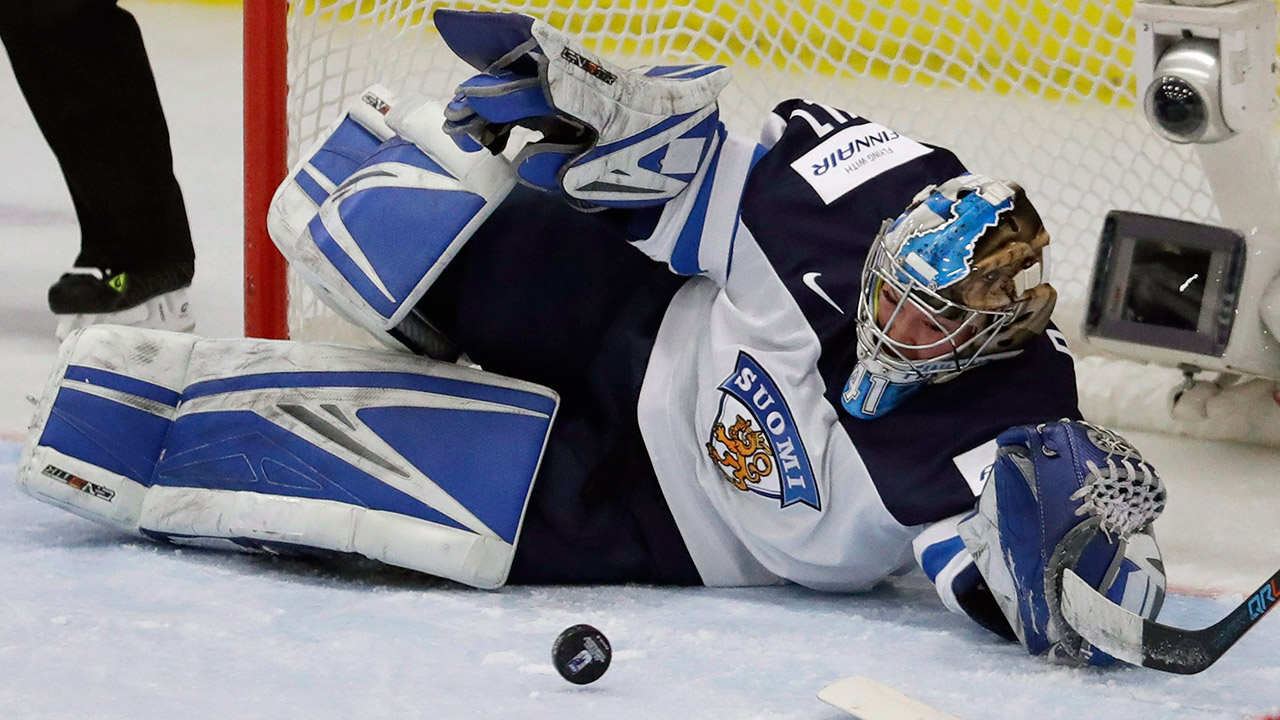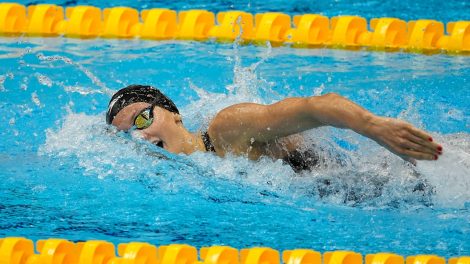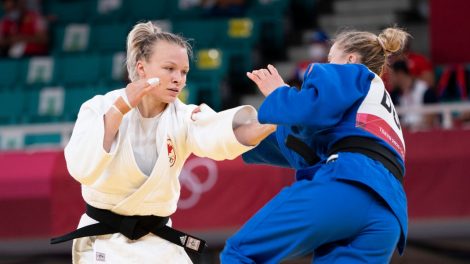Not long ago, Vanke Rays head coach Rob Morgan would dump a puck into a corner for a one-on-one battle, and if it was between a Chinese national team player and a North American, there’d be no doubt in his mind who was coming out with that puck.
But last week, during a couple practices ahead of his team’s opening game of its inaugural CWHL season, he saw a very different compete level among the Chinese players on his roster.
“Now, there’s contact,” says Morgan, the 50-year-old from Medicine Hat, Alta., who was named head coach of Vanke back in April. “It’s a battle. That wasn’t happening before.
“That’s been the really good surprise—the positive growth that has happened in such a short period of time already among the Chinese nationals. And we get to do this for the next five years.”
They do. Because this is just the start of an enormous project to bring hockey to China in time for the 2022 Olympics in Beijing, to elevate the country’s national teams to have a shot at the podium.
And this weekend, history is being made in Markham, Ont., where the Kunlun Red Star—the other China-based expansion team joining the CWHL this season, headlined by Finnish national team goaltender Noora Raty, and Team USA star Kelli Stack—will play their first-ever game in the league. Vanke gets its start next weekend in Toronto.
[relatedlinks]
To hear Morgan explain it, the Vanke team is full of young players, while Kunlun is the more experienced and established of the two new CWHL franchises. “It’s kind of like the Edmonton Oilers and the Detroit Red Wings of a couple years ago,” he says, of the Rays and Red Star. “We have the younger team with a lot of potential, so it’s just a matter of developing that.”
That’s a good way to look at the goal for hockey in China, as a whole, really. A ton of potential—a population of 1.3 billion—that has barely dipped its toe into hockey waters.
Last season, there were fewer than 300 registered female hockey players in China. The goal is to start to change that, and these CWHL teams are one step in that direction.
Digit Murphy is the chief coach of HC Red Star Hockey in China and head coach of the Kunlun CWHL team. Kunlun plays Markham twice this weekend—at 7:30 p.m. at Thornhill Community Centre in Markham on Saturday and at 12:30 p.m. on Sunday.
Murphy, the former head coach at Brown and of the CWHL’s Boston Blades, says she’s trying to keep her Red Star players level ahead of their first games.
“For us, the mission is daily, right?” says the 55-year-old from Cranston, R.I. “It’s nice to get going and have the season count for something, but our mission is much broader than the first games of the CWHL season. Our mission is to make the Chinese better, so playing in this league is just a vehicle to achieve our success in 2022.
“We’ve got a long way to go,” she adds, laughing.
Indeed, they do. But the program they’ve set up to help grow the game on the women’s side is geared at making it happen as quickly as possible. Vanke and Kunlun may play against one another in the CWHL, but they’re also working together. They’ll have similar breakouts, the same game plans on power plays and the penalty kill, so that when the national team players come together to play for China, the transition is seamless. The plan is to work together to give this Chinese women’s national team its best shot at success.
[snippet id=3637277]
The Chinese players also have the benefit of learning from ambassadors like Raty and Stack, the Red Star players who own a lot of world championship and Olympic medals themselves.
“When you have Noora Raty and Kelli Stack available, who’ve been there done that at the Olympic level and medalled, and they’re available for KRS and for Vanke, that’s enormous,” Morgan says. “The ability to take this vision and see the sport ambassador model be adopted and embraced so quickly is powerful stuff.”
There are, of course, a lot of challenges to this project. The Rays and Red Star don’t even know yet if they can play their home games as planned at Shenzen Universiade Sports Center, because hockey’s never been played there and they’re not sure the ice will be decent (Morgan says it’s “basically Florida weather.”) If things don’t work out there, they have to figure out a Plan B for their home base, which might be Beijing. But already the Rays have flights booked back to Shenzen for their first home series, so fingers are crossed that the ice holds.
The travel is a whole other story. Both the Rays and Red Star have been in North America for about a month, playing exhibition games. And they won’t return home until mid-November.
“We knew there were gonna be some challenges in figuring out how we’re going to deliver this with the travel and going from one city to another city, because it’s not like the other teams where they play their games and then they go home,” Morgan says. “We have the season chunked out into these segments where we go from one city to another city to another city, then we go home.
“So, how was that going to be embraced? And there’s a real struggle there, but through that struggle they grow, they get stronger, they learn to deal with adversity,” he adds. “Lots of positive growth going on here.”
And lots of room, for growth. Because the fact is, while there are challenges, there’s also a much better chance for China to become a threat on the world stage on the women’s side of the game. There are similar efforts happening to grow hockey on the men’s side, with former NHL coach Mike Keenan leading the Kunlun Red Star team in the KHL, but consider the depth of the field in men’s hockey in Europe alone, and it’s a steep ladder to climb, especially in a hurry.
[snippet ID=3322139]
On the women’s side, the U.S. and Canada are a cut above the rest of the world, and Finland is next-closest. Sweden and Germany are in the mix, but beyond those countries, there isn’t a ton of depth.
“I think for us, in the initial five years here, there’s a bigger chance for us to get better quicker because there’s not as much competition,” Murphy says.
Team China is also going to look very different going forward, because of practices Murphy and Morgan are bringing to the national team. In the past, China assembled its national team by taking the best regional team and allowing them to represent the country. It would be like Canada sending the Alberta provincial team to the Olympics.
“Our Motto is ‘One China’,” Murphy says. “We want to unite the country and keep the best players. It starts now, with an education process. It starts with building trust, building culture. That’s what we’re trying to do there. We’re dealing with a 25-year history of the way they did things, the old-school way. It’s gonna take time, but I’m optimistic, because they wanna win.
“And, hopefully winning is part of everyone’s mission in China. Because that’s what we’re setting out to do.”
Kunlun takes the ice this weekend in Markham, and Vanke in a week’s time, in Toronto. Win or not, we’ll be witnessing some of the first big steps toward that goal.










